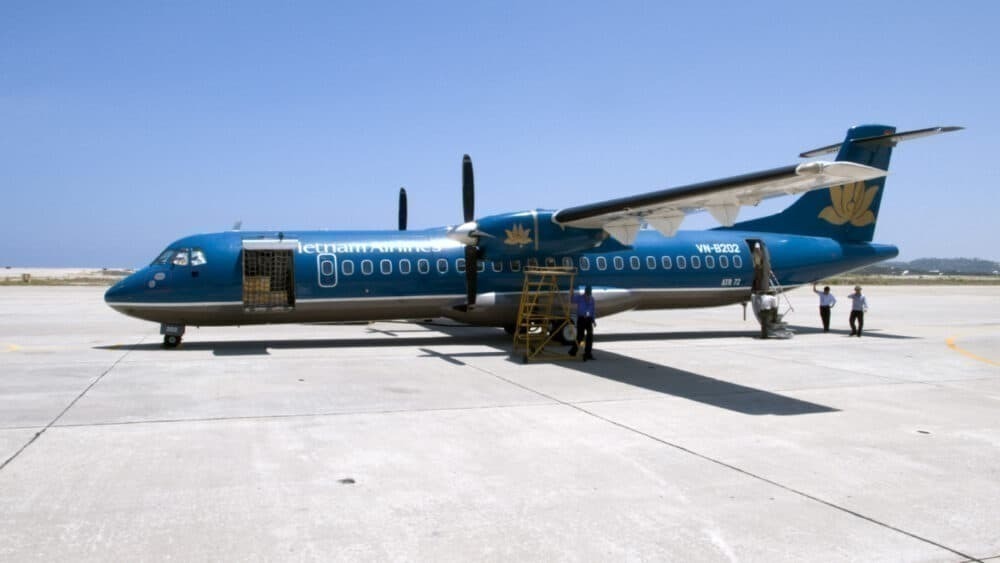Embraer is moving forward with a new turboprop project. The aircraft manufacturer is looking to the future with a larger turboprop that will be environmentally friendly for short-haul operations. While Embraer states that there has not been much innovation in the turboprop market, the manufacturer will still have to face a good amount of competition. Here’s what Embraer is up against.

Embraer’s new turboprop
Just a couple weeks back, Embraer Commercial Aviation’s head of marketing and strategy released more information on the turboprop project. Currently, Embraer is studying a turboprop in the 70-100 seat market. Nothing has been confirmed yet, and Embraer is working on developing a partnership.
Despite Embraer’s belief that there’s little innovation in the turboprop market, the manufacturer still has to contend with several strong competitors. Here’s what the turboprop would compete against today.

The ATR 72
The 72-600 seats up to 78 passengers on the high-end, per ATR. This would put the ATR 72-600 at the smaller end of Embraer’s study. For operators studying the ATR 72-600 versus Embraer’s new turboprop, there would be several reasons for Embraer’s new prop to come out on top.
Getting to a 78-passenger configuration on the ATR would require carriers to offer a low pitch, about 28″ according to ATR. This is one place where Embraer could provide a competitive advantage. One or two different models could efficiently serve the 70-100 seat market.

If Embraer chooses to develop a 70-85 seat turboprop and another, larger 85-100 seat model, then Embraer’s 78-seater turboprop could be closer to a 30-33″ pitch. This could be a more attractive option for airlines seeking to have a competitive advantage.
The ATR 72-600 is a successful turboprop that serves a plethora of markets ranging from fast-growing India to Australia and New Zealand to Europe. Embraer will need to ensure its turboprop can expand on the ATR’s perks, including the large number of airports the ATR can serve and cargo flexibility. The ATR 72-600 does have a shorter range than plenty of other aircraft, so this is one place Embraer can look to improve on compared to ATR by using a more efficient engine.

The Dash 8
De Havilland calls the Dash 8-400 “the most productive turboprop on the market.” This aircraft will, arguably, be Embraer’s stiffest competition. The Dash 8-400 fits the 70-90 seat market– basically the same market as Embraer’s study.
The Dash 8-400 has a range of over 2,000km (about 1,268 miles). It is a very popular turboprop that flies for plenty of airlines. WestJet uses it for its lower-demand regional routes. Alaska Airlines’ Horizon Air flies the Dash 8 on Pacific Northwest routes. Ethiopian Airlines can fly the Dash 8 in and out of Addis Ababa– a hot and high airport. The versatility of the Dash 8 is pretty well-known.

Embraer can learn a lot from the Dash 8’s success. First and foremost, the Dash 8 has recently overcome its luggage problem, it has an extensive amount of flexibility, and it is a relatively quiet turboprop with an incredible amount of name recognition.
Embraer does not essentially have to copy the Dash 8, but rather offer a little extra for its customers. This includes cutting down operating costs even further with more efficient engines, offering additional cabin flexibility to ensure that passengers are less worried about their luggage, but also ensure that a high payload does not limit the aircraft’s range of operations.

The E-Jets
To some extent, Embraer’s turboprop will compete against the planemaker’s better-known regional jet line. While there are some E-Jet missions that a turboprop could not do (say longer routes, for example, between San Francisco and Madison, Wisconsin), it is the short-haul routes where the turboprop will be going up against the ERJs.

For example, take KLM’s 45-ish minute Brussels (BRU) to Amsterdam (AMS) flight that is operated using Embraer’s E-Jet series, including the ERJ190. On a route this short, a turboprop could be the answer to reducing aircraft emissions without sacrificing the speed of flight. While a turboprop would not be as fast as a jet, on a route this short, the difference would be negligible in the broader scheme of things.
In essence, Embraer has to ensure that its E-Jet and turboprop series of aircraft are marketed differently. While the E-Jets are incredibly efficient, they are very flexible and able to fly a number of different routes. Embraer’s marketing team will have to take care of that. Although, there likely will not be many situations where the two overlap and would directly compete against each other.
What do you think will be Embraer’s new turboprop’s strongest competitor? Let us know in the comments!
[ad_2]
Source link


